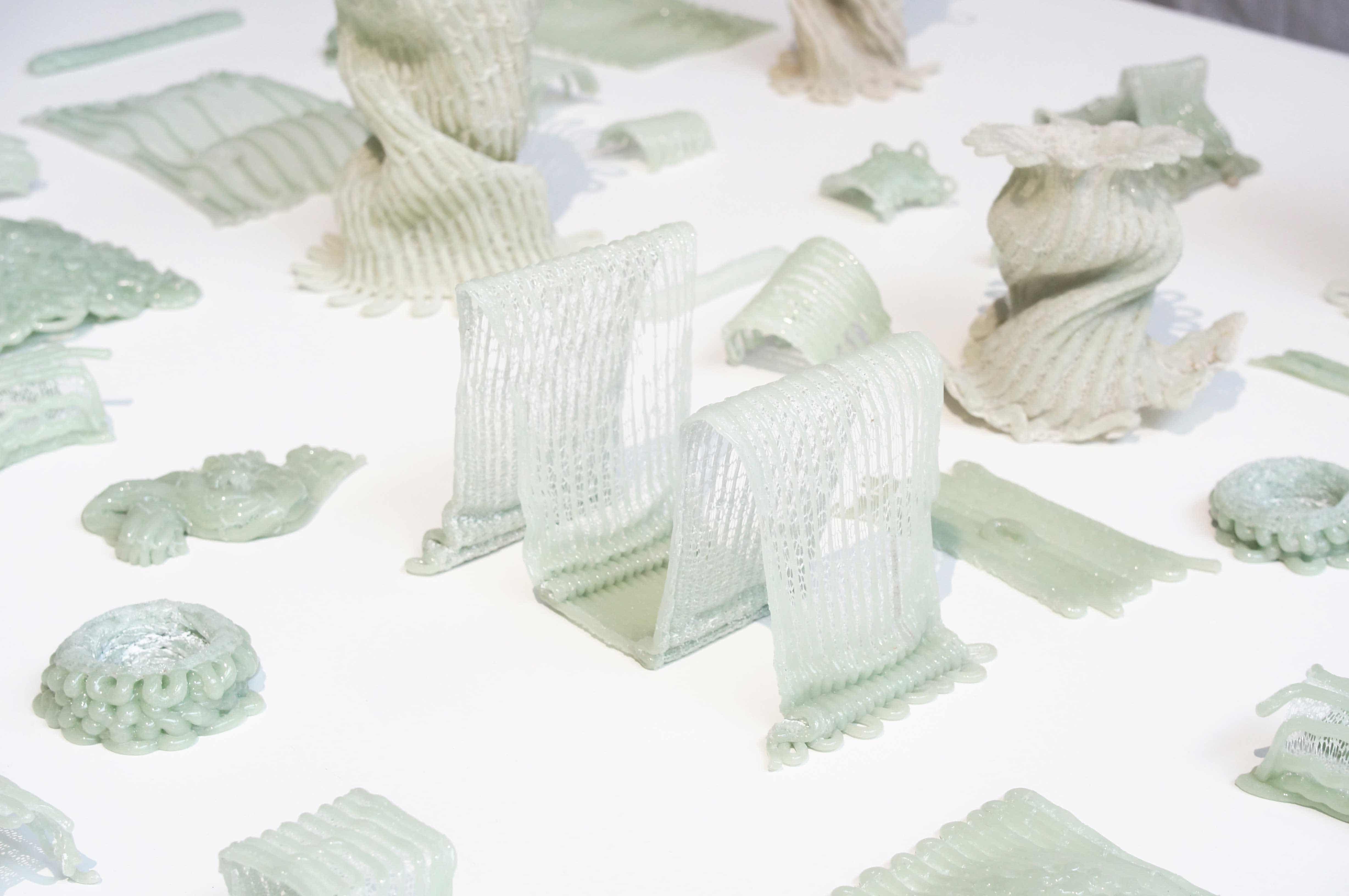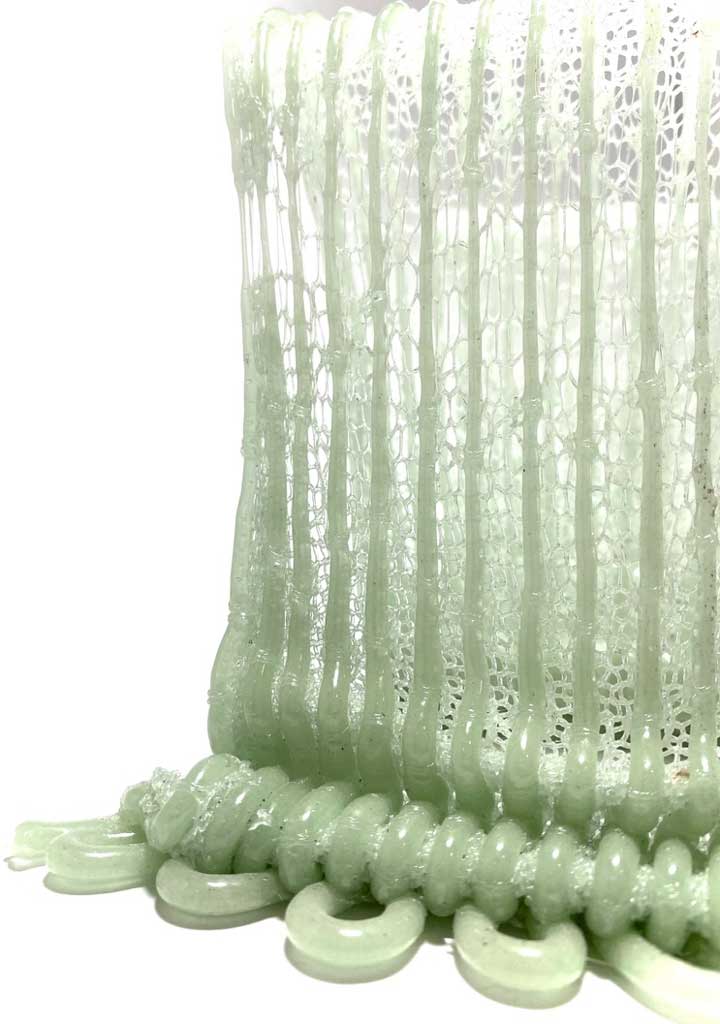Canadian designer Sarah Roseman’s latest research and experimentation has led to the creation of a soft and flexible material that appears like a byproduct of a naturally occurring process rather than an artificial one. Dubbed Soft Silica by Roseman, the material is crafted by knitting glass in its textile state. This grants the glass fibre textile the woven texture and flexibility of fabric, while also making it appear like a sturdy and solid creation, owing to the glass fibres used in its building process.

Soft Silica is a by-product of an year-long process of research and trials that Roseman, who is a Canadian artist and designer, undertook with glass. Curious to know, understand and explore how a rigid material like glass can be interpreted into materials with different, almost opposite properties, Roseman began to play with the molten state of glass. The complete procedure of the creation of Soft Silica involves the melting of the fibreglass, followed by knitting the strands to sculpt out a cohesive piece. The final result of this process is as impressive as the two-step process itself.

By using the glass fibres as the elemental materials, Roseman was able to utilise its flexibility to mold out detailed versions of all kinds of organic shapes and forms like sculptural vessels, tapestries, bowls and standalone artifacts, something that is not possible in any kind of traditional glasswork. In fact, she also experimented with a copper wire, which was integrated within the material, owing to its flexibility. The merit of the copper wire within the gooey material lies in its ability to transmit electricity through the sculptural art pieces in order to power a light source.
Sarah Roseman is a Canadian designer whose work comes from long periods of research and experimentation. She currently works and resides in Eindhoven, a city located in the southern portion of The Netherlands. Most of her designs and creations are born out of the curiosity to explore new possibilities for extant materials and ideas, either by the processes used to create them, or in the way they are re-composed and re-configured into new objects.






 Sign in with email
Sign in with email












What do you think?